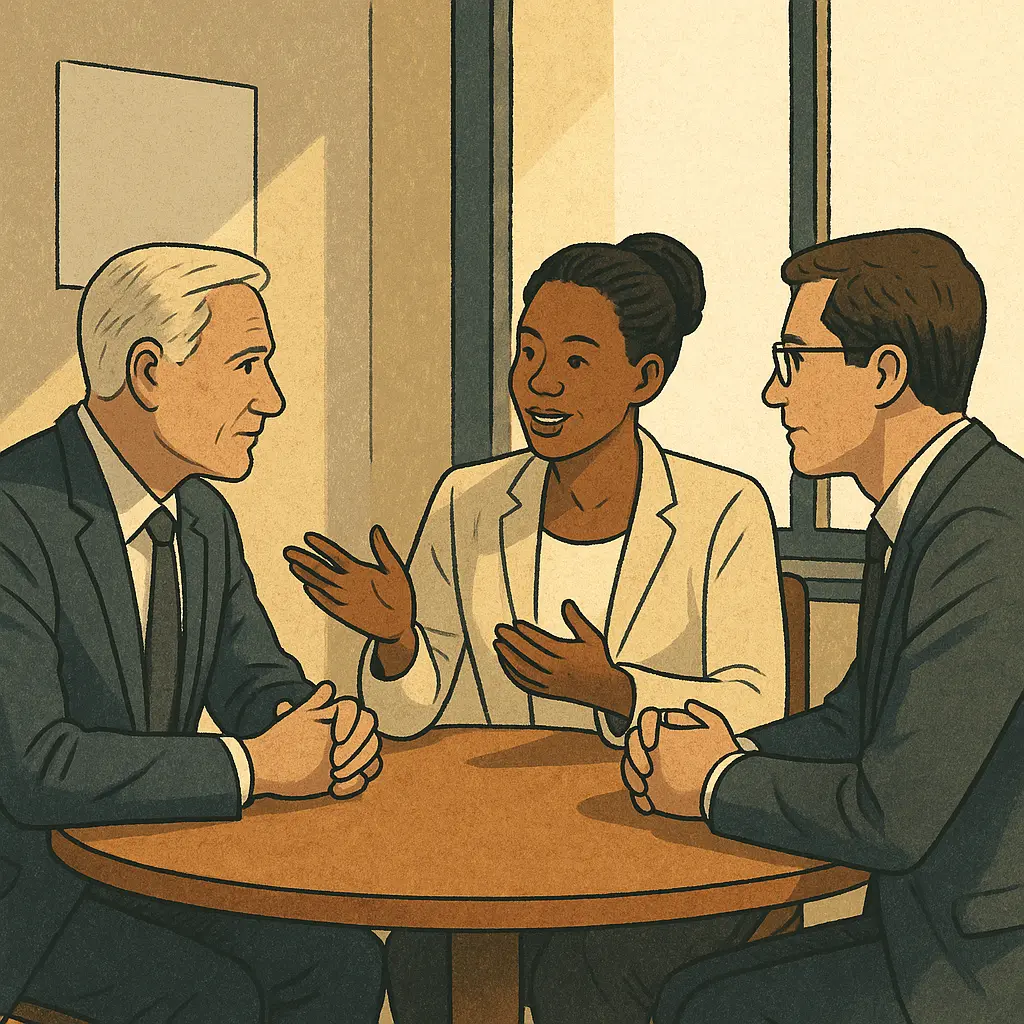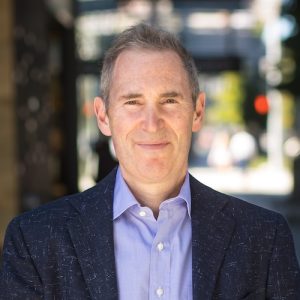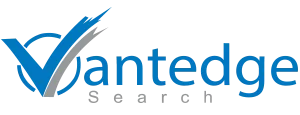View From The Top

Rajesh Khanna,
President,
Vantedge Search
What has become increasingly clear in our conversations with boards and CEOs is that the debate around “return to office” is not really about attendance, it is about culture. Proximity has resurfaced as a strategic variable: a signal of how leadership intends to shape collaboration, rebuild momentum, and sustain trust in periods of change. Our cover story examines this through contrasting philosophies, from organisations that view in-person presence as the fastest route to alignment, to those that have turned flexibility into a structured, scalable advantage. In each case, what matters is not the model but the intent behind it: how leaders design shared context, cohesion, and clarity in a world where work no longer has one fixed address.
This theme continues across the rest of the issue. Our expert perspectives highlight how presence has evolved from managerial routine to cultural choreography: knowing when to be in the room and when to empower from afar. The career section looks at the leadership qualities that will define longevity in 2026: adaptive authority, cross-generational fluency, and visibility that travels across geographies and mediums. And as always, the CEO, CFO, and CIO movements offer a view into how organisations are recalibrating leadership to reflect new priorities. My hope is that this edition helps you move past the binary debate and instead focus on the rhythm of work that best sustains your people, your culture, and your goals.
The Culture Dividend: Why Proximity Still Matters in a Digital World

For all the talk of digital transformation, some of the most transformative moments still happen face-to-face — in the corridor, over coffee, or at a whiteboard.
Recent conversations among CEOs have reignited the question of what truly drives culture in a digital-first world. As organizations continue to balance flexibility with cohesion, one theme is emerging with clarity: proximity still matters.
In the rush to redefine the modern workplace, proximity has become an underrated strategic asset. As technology dissolves borders and screens replace meeting rooms, a quiet realization is emerging among leaders: culture is not transmitted by Wi-Fi. Instead, it is absorbed through shared moments, spontaneous collaboration, and the simple, often-overlooked rhythm of being present.
Still, not everyone agrees on what the new balance should look like. As highlighted in CEO World Magazine, global leaders are taking divergent approaches. Amazon, under Andy Jassy, has emphasized collective energy and in-person collaboration as the key to innovation.
Microsoft and Atlassian, on the other hand, have maintained a strong belief in hybrid flexibility — betting that autonomy and trust are equally powerful cultural currencies. Even Zoom, the emblem of remote connectivity, has nudged its teams back into shared spaces.
The divergence tells a larger story: there is no singular blueprint for culture anymore; rather, there are only adaptive philosophies that reflect each organization’s DNA, workforce composition, and generational mix. More than that, the divide shows that for all the gains of remote work, something vital still happens when people share a table, a whiteboard, or even a passing conversation in a hallway. Proximity rather gives collaboration a heartbeat and culture a home.
Beyond Connection — Toward Cohesion
The distinction between connection and cohesion has become critical. Connection can be scheduled, managed, and measured through digital means. Cohesion cannot. Cohesion grows in unplanned conversations, in the subtle cues that emerge from shared space, in moments that can’t be logged on a calendar.
Executives are beginning to recognize that the most cohesive teams aren’t those with the best tools; they’re the ones with shared context. Proximity doesn’t guarantee culture, but it accelerates it. It builds empathy at speed. It enables course correction before misalignment takes root.
The Leadership Presence Equation
For leaders, physical presence has evolved from a managerial necessity into a cultural signal. When executives show up, not just in board meetings but in project spaces, client sessions, or even informal gatherings, it communicates values that can’t be captured in a policy document.
Presence tells a story: that leadership is accessible, that strategy has a heartbeat, that culture isn’t a slogan but a practice. In the digital era, where attention is the scarcest currency, visible leadership reinforces belonging and belief: the two ingredients that keep performance resilient.
Yet presence doesn’t have to mean permanence. The strongest leaders are mastering a new rhythm: knowing when to be in the room, and when to empower others from afar. Hybrid work has made leadership choreography as important as leadership charisma.

Proximity as a Talent Signal
For executive search professionals, proximity now carries a different connotation. Bypassing geography or headcount, it is now about how leaders intentionally create psychological proximity, even across distributed teams.
Candidates who understand this nuance stand apart. They know how to use in-person interactions to cement trust, but they also recognize that autonomy fuels innovation. Their leadership transcends from being about presence for its own sake to creating gravitational pull, a culture people want to orbit.
As organizations evolve, the most successful leaders will be those who can translate proximity into performance — not by enforcing attendance, but by inspiring alignment.
Reclaiming the Human Advantage
Technology will continue to advance, and workplaces will continue to flex. But culture remains stubbornly human. It is crafted through tone, timing, laughter, and even disagreement. It is shaped by how people feel when they log off, not how efficiently they logged in.
As we move toward 2026, one truth is becoming apparent: there is no universal model of success. Generational expectations, market realities, and leadership philosophies will keep reshaping how and where we work. Some organizations will double down on proximity; others will perfect digital flexibility.
The wisest leaders will resist taking sides. They’ll instead ask the harder question — what rhythm of work best sustains our people, our culture, and our goals? Because in the end, the objective of proximity is not to just be in the same room but to move in the same direction.
Closing Thought
The future of work won’t be defined by remote or office walls, but by relevance — by leaders who can sense what their people need, and design cultures that honor that truth. In 2026 and beyond, perhaps the most progressive strategy will be the simplest: each to their own, but together in purpose.
Source: Culture is a central key to the remote work debate – CEOWORLD magazine
For more information on Vantedge Search, please contact us. We look forward to hearing from you.
Expert's Corner –
What's Trending?
Insights from Industry Leaders on What Fuels Culture and Performance
Across industries, leaders are re-evaluating what truly fuels performance and culture. For some, proximity is the heartbeat of collaboration; for others, flexibility is the new foundation of trust.

Gillon McLachlan, MD & CEO, Tabcorp: “Winning Cultures Are Built Together”
When Gillon McLachlan, MD & CEO of Tabcorp, directed his 1,500 employees to return to the office five days a week, it wasn’t framed as a rollback of flexibility — it was a statement of intent. Calling it “a winning culture” reset, McLachlan positioned physical presence as a strategic lever for performance and cohesion.
In his internal note to staff, he described the move as a “step change” — an effort to reconnect teams, rebuild accountability, and reenergize collaboration after a challenging year. The decision, seen by some as bold and by others as backward, reflects a conviction that proximity sharpens focus and restores shared purpose in times of organizational reset.
McLachlan’s philosophy underscores a truth many traditional leaders share: for companies rebuilding momentum or culture, physical togetherness is still the fastest route to alignment. In industries where teamwork and competitive intensity define results, the office remains more than a space — it’s a signal of intent.
Source: Work from home: Tabcorp CEO Gill McLachlan orders staff back to office five days a week

Andy Jassy, CEO, Amazon: “Connection Keeps Innovation and Culture Strong”
Amazon CEO Andy Jassy says bringing employees back to the office has strengthened the company’s inventive spirit. “When we brought people back to the office three days a week in May of ’23, we noticed that a lot of things about how we were inventing and collaborating got better,” he explained on the HBR IdeaCast. Jassy believes in-person interaction fuels faster and more creative problem-solving: “People riff on top of each other’s ideas better if they’re together… sometimes it’s actually useful to interrupt each other because you get to a faster spot more quickly.”
He also argues that being together is essential for building and transmitting Amazon’s culture. “It’s much harder to see it when you’re remote,” Jassy said. “When you’re in a meeting together and you’re watching body language and expressions, you internalize the culture much better.” He added that mentorship and apprenticeship thrive in person — the kind of spontaneous coaching moments after tough meetings that “you just don’t end up doing… when you’re remote.” For Jassy, the return to office is less about control and more about keeping Amazon’s innovation and culture strong.
Source: Amazon CEO Andy Jassy on Agility, AI Strategy, and the Changing Role of Managers

Anu Bharadwaj, President, Atlassian: “Flexibility With Frameworks”
At Atlassian, leadership has turned flexibility into a structured advantage through its Team Anywhere model — a fully distributed operating system built on trust, data, and deliberate connection. Introduced in 2020, the policy allows employees to live and work from almost anywhere in countries where Atlassian operates, transforming offices into optional collaboration hubs rather than mandatory destinations.
President Anu Bharadwaj has described the approach simply: “Whether someone chooses to come in once a week or not at all, it should be irrelevant to how productive they are.” Backed by five years of experimentation and strong executive sponsorship, Team Anywhere now defines Atlassian’s culture — remote-first, but not remote-only.
Quarterly in-person gatherings replace daily mandates, intentionally reinforcing connection and alignment. According to Atlassian’s Distributed Work Report 2024, 92 percent of employees say the model helps them do their best work, and 91 percent cite it as a reason they stay. Annie Dean, who leads Team Anywhere, says the goal was to eliminate “managing where people are working from” because it “doesn’t create value.”
For Atlassian’s leaders, flexibility is not absence — it’s infrastructure. By blending outcome-based management, transparent pay frameworks, and data-driven rituals for connection, they’ve proven that distributed work can scale sustainably when culture, compliance, and leadership move in unison.
Executive Movements:
Leadership Transitions & Strategic Pivots
CEO Movements
Stellantis Announces Major Leadership Reshuffle: Stellantis CEO Antonio Filosa has announced a sweeping executive reshuffle, naming Emanuele Cappellano, previously head of South America, as the new chief of Enlarged Europe and European Brands. Cappellano will retain oversight of Stellantis Pro One, while Herlander Zola succeeds him as South America head. The automaker also confirmed Francesco Ciancia will rejoin as Global Head of Manufacturing and join the senior leadership team after leading van operations at Mercedes-Benz.
Ogilvy has named Kirsty Muddle as CEO of Ogilvy Network Australia and New Zealand, succeeding Sally Kissane, who stepped down in July after three decades with the agency. Muddle joins from Dentsu, where she served as CEO of Practices & Products for ANZ.
Parag Parikh, former CFO of Adani Total Gas, has joined GPS Renewables (GPSR) as CEO of GPSR Arya, the company’s asset platform. Parikh, who stepped down from Adani Total Gas on September 30 to pursue new opportunities, brings over 25 years of experience in finance and infrastructure across sectors including roads, ports, power, and emerging energy areas such as compressed biogas (CBG) and EV charging.
Landmark Group announced key leadership changes at Lifestyle International Pvt. Ltd. (LIPL), effective October 1. Shital Mehta, who previously led Max and Easybuy for eight years, has been promoted to Managing Director with an expanded mandate overseeing multiple group businesses and functions. Sumit Chandna, formerly Deputy CEO of Max Fashion, has been appointed as the brand’s new Chief Executive Officer.
Standard Chartered has appointed Roberto Hoornweg as Chief Executive of Corporate and Investment Banking, promoting him from the co-head role he previously shared with Sunil Kaushal. Kaushal will retire on March 31, 2026, concluding a 27-year tenure with the Asia-focused lender. Hoornweg, who joined the bank in 2017 as Global Head of Financial Markets, will continue to oversee operations across the Americas, Europe, Africa, and the Middle East.
J.P. Morgan Advisors, the brokerage arm of J.P. Morgan Wealth Management, appointed Mollie Colavita as Chief Executive Officer following the retirement of Phil Sieg, effective October 15. Colavita, previously Head of Practice Management for the firm’s broader wealth division, steps into the role immediately.
Oracle Corporation has announced the promotion of Clay Magouyrk and Mike Sicilia to the roles of Chief Executive Officers, while current CEO Safra Catz has been appointed Executive Vice Chair of the Board of Directors. Magouyrk, previously President of Oracle Cloud Infrastructure (OCI), joined Oracle from Amazon Web Services in 2014 and led the company’s Gen2 cloud platform to significant global expansion, positioning OCI as a leading AI training and inference platform. Sicilia, formerly President of Oracle Industries, has overseen the modernization of Oracle’s industry-specific application suites—particularly in healthcare, banking, and utilities—by embedding advanced AI agents and automation.
Sun Life Financial Inc. has appointed Sujoy Ghosh as Chief Executive Officer of its High-Net-Worth (HNW) business, effective November 4, 2025. Based in Asia, Ghosh will oversee Sun Life’s HNW operations across Hong Kong, Singapore, and Bermuda, leading efforts to expand its global partnerships and strengthen capabilities in the ultra-affluent client segment.
CFO Movements
Elon Musk’s xAI has appointed Anthony Armstrong, former Morgan Stanley banker and advisor on the X acquisition, as its new Chief Financial Officer.
Restaurant Brands Asia, the operator of Burger King India, has appointed Arijit Datta as Chief Financial Officer and Key Managerial Personnel, effective October 8, 2025.
SMS has appointed Sean West as Chief Financial Officer, bringing over 20 years of senior financial leadership experience across infrastructure, real estate, and investment sectors.
FedEx Freight has appointed Marshall Witt, former TD SYNNEX CFO, as Senior Vice President and Chief Financial Officer, effective October 15, ahead of its planned spin-off.
PepsiCo, Inc. has appointed Steve Schmitt as Executive Vice President and Chief Financial Officer, effective November 10, 2025, succeeding Jamie Caulfield, who will retire in 2026 after more than 30 years with the company.
AIG has appointed Tom Horn as Chief Financial Officer for EMEA, succeeding Roberto Nard, who will retire from the company at the end of 2025.
CIO/CTO Movements
Davies has appointed Adam Warwick as Group Chief Information Officer, overseeing technology strategy across its insurance and financial services operations.
Vestis Corporation has appointed Wendy Zacchio as SVP, Chief Information and Digital Officer, strengthening its executive leadership team.
Bridge Specialty Group has promoted Steve Emmons to lead IT strategy and architecture, advancing its technology focus across property, casualty, and professional lines insurance.
Reynolds American Inc. appointed Dawn-Marie Hutchinson as Senior Vice President and Chief Information Officer, effective October 1, 2025, to lead technology strategy and operations.
Infoblox has appointed Justin Kappers as Chief Information Officer, tasked with leading global IT operations and advancing AI-driven initiatives to support growth.
Kratos Defense & Security Solutions, Inc. has appointed Brian Shepard as Chief Information Officer, overseeing IT, information security, compliance, and data communications company-wide.
Insights: Inferring the why
Behind every leadership change outlined above lies a signal — of where organizations are steering next.
- Leadership Transitions as Catalysts for Transformation
Executive appointments are increasingly used as strategic levers — not mere successions. Each shift reflects an organization’s intent to reset priorities, accelerate transformation, or align leadership capabilities with a rapidly evolving market reality. - Shared and Distributed Leadership Is Gaining Ground
The rise of co-leadership and functionally paired executive roles shows a broader acceptance that complex enterprises demand collective intelligence. Power is being redistributed to foster collaboration, balance expertise, and enable faster, cross-functional decision-making. - The Internal Succession Imperative
A growing number of senior promotions signal that organizations are betting on institutional continuity. Companies are prioritizing leaders who understand internal culture, stakeholder networks, and legacy systems, ensuring transformation without disruption. - The Redefinition of CEO Skillsets
Boards are no longer seeking traditional operators; they’re selecting integrators. The new leadership archetype blends strategic vision with fluency in technology, data, and human capital. Emotional intelligence now ranks alongside financial and digital acumen as a defining leadership trait. - Leadership Moves as Signals of Culture Recalibration
Many transitions today are less about performance gaps and more about cultural evolution. New appointments often represent a recalibration of tone, a statement on how organizations want to lead, engage, and define their identity in a more transparent, values-driven business environment.
Leadership changes, therefore, are not just about continuity. They are increasingly becoming more about what the organization wants the world to believe it’s becoming.
Leading for Longevity in a Hybrid Era
For executives today, leadership success is increasingly defined by presence of mind. As proximity, flexibility, and culture continue to reshape how teams perform, the C-suite’s own development demands reinvention. The leaders who endure will be those who can inspire trust across distance, sustain culture through clarity, and evolve authority for a world where work has no single location.
- Redefine Leadership Visibility
Physical presence used to equal influence. Now, visibility comes from accessibility, clarity, and purpose. Be intentional in how you show up — in person or online. Make strategy tangible through consistent communication and visible alignment with your team’s values. In an era of distributed leadership, visibility is about being meaningful wherever you are.
- Develop Adaptive Authority
The C-suite playbook for authority is changing. Command and control no longer drive commitment; adaptability does. Leaders who can alternate between directive and collaborative modes, depending on context and team maturity, will remain relevant. Adaptive authority signals confidence without rigidity and earns followership through flexibility, not fear.
- Mentor Across Modalities
Mentorship has become both more complex and more powerful. Invest in relationships that transcend geography; use digital tools to mentor emerging leaders while still prioritizing in-person development moments. Formalize mentorship as part of leadership cadence, ensuring that connection doesn’t depend on corridor conversations alone. Influence, when multiplied across platforms, becomes culture in motion.
- Anchor Culture in Clarity, Not Geography
Culture can’t be confined to an office, so it must be designed to travel. Define what your organization stands for in clear, actionable terms: values, rituals, and leadership expectations that translate across time zones and teams. Codified culture ensures consistency even when proximity fades. The best leaders treat culture like architecture: durable, portable, and intentional.
- Reimagine Executive Presence for Hybrid Audiences
Presence today extends beyond the boardroom. It’s the ability to project confidence, empathy, and credibility across mediums, from global town halls to digital stand-ups. Refine your storytelling, listening, and visual communication to resonate with both physical and virtual audiences. Great leaders no longer just “command the room”; they connect through the screen.
- Future-Proof Through Cross-Generational Empathy
By 2026, five generations will share the workforce. Each brings distinct motivations, work rhythms, and values. Leaders who cultivate generational fluency, understanding what drives both seasoned experts and digital natives, will build more inclusive, resilient teams. Empathy across generations is not soft leadership, but strategic continuity.
Leadership longevity in a hybrid world depends on range — the ability to flex across contexts, generations, and geographies without losing coherence. The executives who will define 2026 are those who master how to integrate all of it: designing cultures that adapt, influence that travels, and legacies that last.

